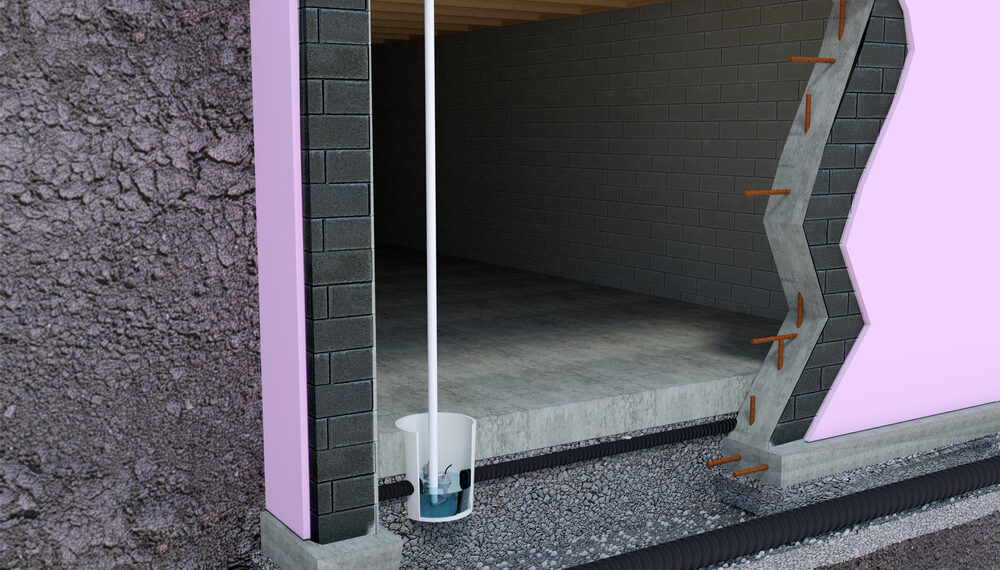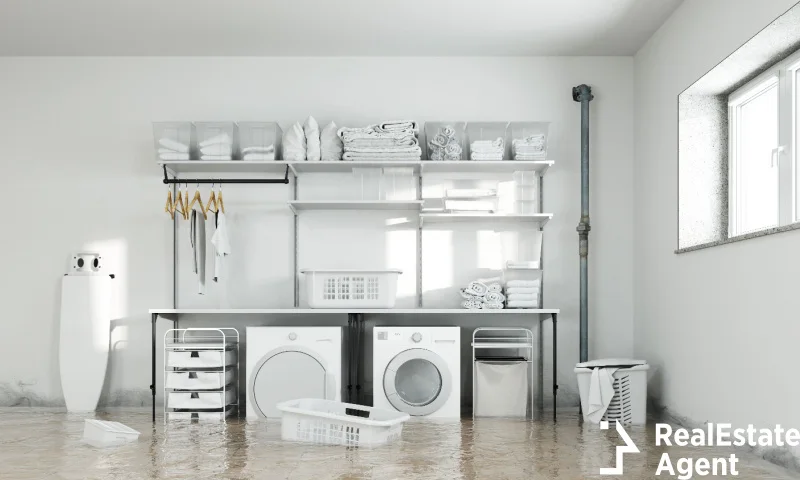Your home’s crawl space is between the ground and the first floor. Its adequate maintenance is easy to overlook but can generate considerable havoc if neglected. Moisture seeking this underground space leads to nightmares like rotting wood, mold taking over, and pests making themselves at home.
These issues don’t just affect the outside interior of your home but can make the air you breathe downright unpleasant. This guide covers the critical steps to waterproofing your crawl space to keep it dry and your home safe. You’ll learn about the causes of moisture, waterproofing methods like sealants and drainage systems, proper ventilation, and maintaining a dry crawl space over time. Protecting this often-overlooked area is essential for a solid, comfortable living environment. You can also contact real estate agents directory members for additional information!
Table of Contents
- Defining Crawl Space and Its Purpose
- How Does Moisture Get Inside Crawl Spaces?
- Why Waterproofing Your Crawl Space is Important?
- Signs of Waterproofing Problems in Your Crawl Space
- Process of Waterproofing Your Crawl Space
Defining Crawl Space and Its Purpose
As mentioned, a crawl space signifies a narrow room high enough to crawl into. Its primary purpose is to provide access to utilities like plumbing pipes, electrical wiring, and HVAC ductwork beneath the home. It also raises the living area above potential flood levels in flood-prone areas.
Crawl spaces allow homeowners to inspect and repair pipes and ducts without digging up the yard or tearing apart floors. They also help control moisture levels, preventing dampness issues. In urban areas with limited space, a crawl space gives utility access to a basement without taking up as much room.
How Does Moisture Get Inside Crawl Spaces?
Crawl spaces get damp because of water entering from the ground, walls, or outside air. Rain soaks into the soil and seeps in through the floor. Water can also leak through cracked foundation walls or windows. Poor drainage around the home’s exterior lets water pool and find its way under the house. Even humid air holds moisture and condenses on cool crawl space surfaces. Homebuyers must be cautious about these red flags during a home inspection!
Once water gets trapped in the crawl space, it creates conditions favorable for mold growth and wood rot problems to develop. Preventing moisture entry through proper crawl space waterproofing, drainage, and ventilation is vital to keeping crawl spaces dry.
Why Waterproofing Your Crawl Space is Important?
Crawl space waterproofing is important because moisture accumulation in that area can lead to foundation cracks, structural damage, and mold growth that circulates unhealthy air into your living spaces through the stack effect. It prevents these issues, saving you money on repairs and energy costs while ensuring a safe, healthy environment. However, before moving with the crawl space, ensure you move with basement waterproofing. A little prevention now saves you a costly headache later, so it’s worth taking care of sooner.
Signs of Waterproofing Problems in Your Crawl Space
Now that we have talked about the importance of maintaining a healthy dry crawl space for your home, here are some common signs that may indicate the need for crawl space waterproofing:
- Puddles on the floor suggest there’s a problem with how the water is draining away from your home
- Stains or discoloration on the walls can indicate moisture has been seeping in
- Mold growth, wood rot, and condensation buildup point to high humidity levels
- An influx of pests like bugs or termites means the damp conditions are attracting them
- If your crawl space regularly floods due to high water table, that’s a clear sign it needs better waterproofing
Process of Waterproofing Your Crawl Space
Waterproofing crawl space is crucial for a healthy home. Untreated moisture issues in the crawl space can develop mold and mildew, pest infestations, and even damage the home’s foundation. Check for foundation problems before proceeding. Follow these eight comprehensive steps to waterproof your crawl space:
1.Inspect Everything Closely
The first step in effective crawl space waterproofing is carefully inspecting your crawl space from top to bottom. Look for any signs of moisture, like wet spots on the walls or floors. Check the vents and openings, too—these can be spots where water gets in. Use a moisture meter to see if the humidity level is too high, over 50%. This meter will help you identify where the problems are coming from.
2.Find and Fix Leaks
Once you know where the water is getting in, the next step is to seal up any cracks, gaps, or openings. Use caulk or sealant around vents, pipes, and other areas to block the water from seeping through. You also want to ensure the ground around your home’s foundation slopes away from the house so rainwater and surface water don’t pool up near the crawl space.
3.Clear the Crawl Space
Before you can start waterproofing, you’ll need to clear out the crawl space. Remove debris, old vapor barriers, or other obstructions. This type of “decluttering will give you a clean, unobstructed space to work with.
4.Repair Structural Damage
While clearing the crawl space, inspect it closely for structural issues, such as rotten or damaged wood. Replace any compromised components to keep the crawl space structurally sound.
5.Seal Up Openings and Insulate
While opting for crawl space waterproofing, use hydraulic cement and vent covers to seal up any openings that could let in air or moisture. Then, insulate the walls and floors with materials from boards and fiberglass batts. Incorporating this extra layer of protection will help keep water out.
6.Add a Sump Pump or French Drain
Areas with heavy rain or high water tables may benefit from installing a French drain system or a sump pump. A sump pump can collect and actively pump excess water away from your home while the French drain diverts surface water.
7.Vapor Barrier Installation
A crucial step is to lay a high-quality vapor barrier on the crawl space floor. This barrier prevents moisture and groundwater from seeping up through the floor.
8.Improve Ventilation
Good airflow is essential to keep your crawl space dry. Install fans, dehumidifiers, or other ventilation systems to regulate the temperature and humidity. Remember to maintain these systems regularly.
Conclusion
Water can increase your home’s value in some ways. However, this doesn’t apply to your crawlspace! Proper crawl space waterproofing is essential for maintaining a dry, healthy, and structurally sound home. By sealing leaks, repairing damage, installing vapor barriers and drainage systems, and improving ventilation, homeowners can prevent moisture buildup that leads to mold, rotten wood, and pests.
A comprehensive approach to crawl space waterproofing protects the home’s foundation and air quality, saving homeowners costly repairs. With the proper waterproofing, the often overlooked crawl space can become a well-maintained functional part of the home.












